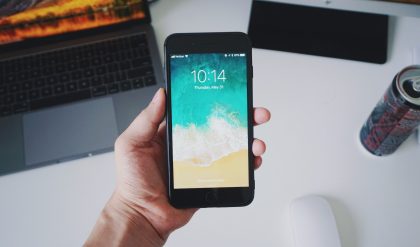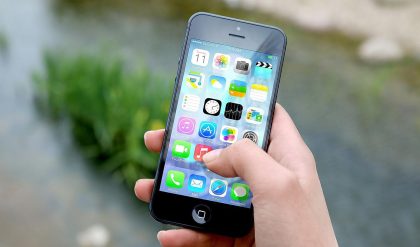
In recent years, more and more people have begun looking at ways to get the full potential of their devices.
One such avenue is the practice of jailbreaking. In this article, we dig into the intriguing question: “Does jailbreaking make your phone slower?”. But before we do that, let’s begin with the basics
Defining Jailbreaking
Jailbreaking is the process of removing software restrictions imposed by the manufacturer or operating system (OS) on a smartphone. These restrictions are put in place to maintain the device’s stability, security, and functionality within the parameters set by the OS developer, such as Apple or Google.
Speed and Performance Factors
How does jailbreaking potentially impact the speed and performance of your smartphone? Let’s have a closer look a the key factors at play to make an informed decision about whether to jailbreak your device.
First, it’s important to note that a smartphone’s performance is a delicate ecosystem of components. These factors include the device’s hardware, its operating system, the apps you run, and even external elements like network connectivity.
The Jailbreaking Equation
When you jailbreak your phone, you are essentially making alterations to its operating system. These modifications can take various forms, including changes to system files and settings. While these adjustments can unlock new features and customization options, they can also introduce instability and inefficiencies into the system.
- Modifications to System Files and Settings: Jailbreaking often involves tweaks and adjustments to the core elements of the operating system. These changes can potentially disrupt the finely tuned balance that manufacturers have carefully designed to optimize performance.
- Resource-Intensive Tweaks and Customizations: Some users embrace jailbreaking for its ability to install third-party tweaks and customizations. However, these add-ons can sometimes be resource-intensive, placing a heavier load on your device’s CPU, memory (RAM), and other hardware components.
- Impact on CPU and RAM Usage: Jailbroken devices might run additional processes or apps in the background to support customizations or new features. This can lead to increased CPU and RAM usage, potentially causing your phone to feel slower in everyday tasks.
Misconceptions
A common misconception about jailbreaking is that all jailbroken devices automatically become slower. However, this is not the case. The speed and performance impact of jailbreaking can vary widely based on several factors, including the specific tweaks installed, the device’s hardware capabilities, and how well those tweaks are optimized.
Benchmarks and Studies
Benchmarks and studies are valuable tools when trying to determine whether jailbreaking truly affects the speed and performance of your device.
Benchmarking is a systematic process that uses standardized tests and measurements to evaluate the performance of hardware and software. Benchmarking provides a level playing field for comparison which helps draw meaningful conclusions about the impact of jailbreaking.
- Comparative Analysis of Jailbroken vs. Non-Jailbroken Devices: To determine the effect of jailbreaking, researchers conduct side-by-side comparisons between jailbroken and non-jailbroken smartphones. These tests encompass a range of performance aspects, from CPU speed to app loading times.
- Insights from Benchmarks: Benchmarking tools, such as Geekbench and AnTuTu, play a crucial role in assessing a device’s performance. Researchers use these tools to measure factors like processing power, graphics rendering, and memory management on both jailbroken and non-jailbroken devices.
Benchmark Results
The findings of benchmark tests are not always straightforward, and interpreting them requires a keen eye. It’s not uncommon to encounter variations in performance based on the specific tweaks and customizations applied to jailbroken devices.
User Experiences vs. Benchmarks
While benchmark results provide valuable quantitative data, we should also consider qualitative data in the form of user experiences. Real-world usage can sometimes reveal nuances that benchmarks may overlook. Users who have jailbroken their devices often share their insights and observations about whether they noticed any slowdowns or improvements.
The Diverse Spectrum of User Testimonials
Some users report noticeable improvements in performance, while others have encountered challenges or perceived slowdowns.
- Users Reporting Improved Performance: A notable segment of the jailbreaking community attests to their devices running more efficiently post-jailbreak. For some, the ability to fine-tune settings and remove bloatware has resulted in a snappier, more responsive phone.
- Users Reporting Slower Performance: On the flip side, there are users who share experiences of encountering performance bottlenecks after jailbreaking. This can manifest as sluggishness in app loading times, increased battery drain, or unexpected crashes.
Identifying Common Themes
When reviewing user experiences, patterns and common themes emerge. It’s essential to recognize that the outcomes of jailbreaking can be highly contingent on various factors:
- Tweaks and Customizations: The specific tweaks and customizations installed play a pivotal role. Lightweight, well-optimized tweaks are less likely to bog down your device compared to resource-intensive ones.
- Device Hardware: The hardware capabilities of your smartphone also come into play. High-end devices with robust processors and ample RAM may be more resilient to the potential performance hits associated with jailbreaking.
- User Proficiency: The level of expertise and caution exercised during the jailbreaking process matters. Users who take care to install only trusted tweaks and regularly update their jailbreak tools tend to fare better in terms of device performance.
Risk-Benefit Analysis
Having explored the potential effects of jailbreaking on your smartphone’s performance through benchmarks and user experiences, it’s time to perform a risk-benefit analysis.
Weighing the Potential Benefits
Let’s begin by examining the advantages of jailbreaking:
- Customization and Freedom: Jailbreaking can unlock a world of customization options. From theming your device to installing tweaks that enhance functionality, you gain a level of control beyond what’s typically allowed by the manufacturer.
- Access to Third-Party Apps: Some users jailbreak their devices to access third-party apps and services that are not available on official app stores. This can be a game-changer if you have specific needs or preferences that are not met by mainstream apps.
- Removing Bloatware: Jailbreaking often allows you to remove pre-installed apps (bloatware) that you may not use or find unnecessary, potentially freeing up storage space and improving device performance.
Evaluating the Risks and Drawbacks
At the same time, there are risks and drawbacks associated with jailbreaking:
- Security Concerns: By circumventing built-in security measures, you may expose your device to greater security risks, such as malware and data breaches.
- Instability: Modifications to the operating system can introduce instability. This may lead to crashes, freezes, or unexpected behavior, impacting your overall user experience.
- Voiding Warranties: Most manufacturers consider jailbreaking to be a violation of warranty terms, meaning that if something goes wrong with your device, you may not be eligible for repairs or replacements.
- Compatibility Issues: Jailbreaking can result in compatibility issues with official apps and system updates. Some apps may refuse to run on a jailbroken device, and applying OS updates can be tricky.
Recommendations Based on Analysis
After considering the potential benefits and drawbacks, we can offer some recommendations:
- Situations Where Jailbreaking May Be Worth Considering: If you have a strong desire for customization, specific apps, or if you’re experienced and cautious about the process, jailbreaking might be worth exploring.
- Situations Where Jailbreaking Should Be Avoided: If you value the security, stability, and warranty protection of your device, and if you are not prepared for the potential challenges and risks, it’s best to steer clear of jailbreaking.
Tips for Optimizing Jailbroken Devices
If you have made the decision of jailbreaking your phone, it’s time to get started. Therefore, it’s important to understand how to optimize your jailbroken device to ensure it continues to perform at its best.
1. Choose Lightweight Tweaks and Customizations
When selecting tweaks and customizations for your jailbroken device, opt for those that are well-optimized and lightweight. These tweaks typically have a smaller footprint and are less likely to reduce your device’s performance. Thoroughly research each tweak and read user reviews to gauge their impact on performance.
2. Keep Your Jailbreak Tools and Tweaks Updated
Jailbreak tools and the tweaks you install can receive updates to improve stability and performance. It’s crucial to stay up-to-date with these updates, as they often include bug fixes and optimizations. Regularly check for updates in your preferred package manager, such as Cydia or Sileo, and apply them as needed.
3. Monitor Resource Usage
Keep an eye on how your jailbroken device is utilizing resources like CPU and RAM. You can use third-party apps or jailbreak-specific utilities to monitor resource usage. If you notice any tweaks or processes consuming an excessive amount of resources, consider disabling or uninstalling them to maintain smooth performance.
4. Be Cautious with Themes and Visual Customizations
Themes and visual customizations can drastically alter the look and feel of your device but they can also be resource-intensive. Limit the number of themes and heavy visual customizations you apply, as these can impact your device’s speed and responsiveness.
5. Regular Device Maintenance
Just like any other device, your jailbroken smartphone benefits from regular maintenance. Clearing cache files, managing storage, and performing routine software updates can help keep your device running smoothly. Consider using jailbreak-specific maintenance tools to streamline these tasks.
6. Check App Compatibility
Keep in mind that not all apps are designed to work on jailbroken devices. Some apps may detect the jailbreak and refuse to run. Look for jailbreak-specific tweaks that can hide your device’s jailbreak status from apps, ensuring compatibility.
7. Backup Your Device
Jailbreaking introduces a level of risk, so it’s wise to regularly back up your device using both iCloud and iTunes. This way, you can restore your device to its original state if you encounter any major issues or if you decide to un-jailbreak.
8. Stay Informed and Seek Help
Stay informed about the latest developments in the jailbreaking community. Online forums, subreddits, and dedicated websites are excellent resources for troubleshooting, finding new tweaks, and seeking help from experienced users.







